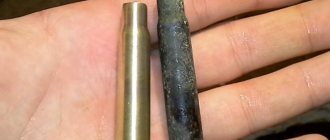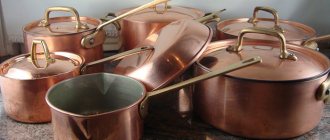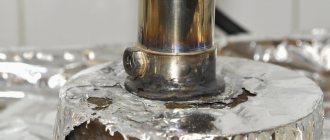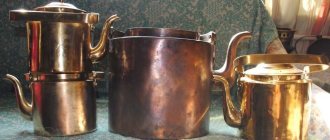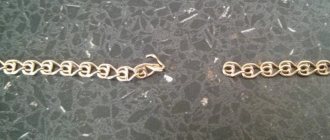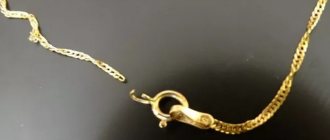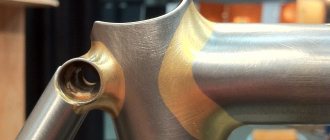Methods for restoring a samovar, useful tips for beginners
The samovar is a symbol of home comfort, warmth and prosperity, known since the time of Peter the Great. Modern products that run on electricity do not provide much value. Heating devices (coal and kerosene) are of much greater interest.
The restoration of samovars will help you feel the life and mood of your ancestors, which will breathe a second life into your grandmother’s dishes. However, prices for this service are not always affordable, since craftsmen consider such items to be antiques.
Armed with tools and patience, you can repair your family heirloom yourself.
When may restoration be required?
The main problems that may require restoration are: the appearance of dents, distortions, scale, loss of shine, the need for tinning or replacement of parts. If you purchase a tea maker second hand, you should carefully examine its internal condition. Even with no external defects, the samovar can leak. The cause is barely noticeable microcracks. In this case, restoration work on the metal product should be carried out immediately.
The brass alloy releases oxides that are harmful to the body. To prevent them from getting into the water, the internal cavity of the device must be coated with special food-grade tin (cleansed of lead and other metal impurities).
In addition, a leaking samovar is dangerous because indelible rust appears in place of the cracks. Its pores contain a large number of bacteria harmful to the human body. Iron is also present in high concentrations in water with rust. Regular consumption of such liquid will affect the functioning of the kidneys and liver. Metal in large volumes is poorly excreted from the body, so poisoning is inevitable.
In the old days, they did not know how harmful lead was to the body. The craftsman soldered dishes using this metal, without thinking about the consequences.
Kinds
Restoration of samovars can be complete, partial or museum. In the latter case, the appearance of the product is restored, but its further use for its intended purpose is impossible. Partial repairs involve subsequent use, but not much attention is paid to restoring the original appearance of the item. When a samovar is completely restored, the internal parts of the product and its outer body are updated.
Partial
Most often, in order to restore the basic functions of the samovar, it is enough to polish the device, nickel plating, tinning, replacing handles, fittings, or eliminating faucet leaks. To polish the samovar, ordinary dishwashing detergent will do.
You can thoroughly clean plaque using tooth powder. This abrasive material will not scratch the surface.
If the key to the samovar tap cannot be turned or removed, then to eliminate this problem you will need special anti-corrosion agents that reduce the adhesion of metal to rust. After treating the part with lubricant, you should carefully remove it from the tap. You can repair the elements of a vessel with your own hands using nickel plating - this is the process of building up a layer of metal on a damaged area. The procedure is simple to perform, but is not applicable for tin, lead and zinc items.
Comprehensive
A service such as the complete restoration of a samovar is not cheap from specialists. However, some problems can be fixed on your own. For example, dents can be easily smoothed out using a rubber hammer. Tap the protruding part of the dent using gentle movements. You can also correct unevenness using mandrels. A metal hammer leaves impact marks. It is not suitable for straightening dents.
A comprehensive restoration necessarily includes such procedures as replacing worn-out fittings, removing plaque, lapping, polishing, tinning, and plating the product with nickel or silver. You can also solder a samovar at home. An important step is to find out exactly where the water is leaking from. To work, you need to get a blowtorch or a propane-oxygen torch and copper-phosphorus solder.
The procedure is as follows:
- Before sealing the dishes, they must be thoroughly cleaned of dirt.
- Next, prepare the flux: take 1 tablespoon each of borax and boric acid, dilute them in 1 glass of boiling water.
- Cracks are treated with prepared flux.
- The problem area is then heated using a torch. The metal should take on a reddish tint. If overheated, it will be much more difficult to solder.
- Touch the solder to the heated area of the samovar. The metal will slowly begin to spread, falling into the cracks.
Soldering must be done on a heat-resistant stand. Good materials for this are brick or asbestos plate.
Tinning the samovar
In order to protect metal products from oxidation, their inner surface is coated with tin. This method of processing dishes is called “tinning”, and the applied layer of metal is called “half-dish”. To reduce tin costs, bismuth is additionally used. Lead impurities, as well as poisonous salts, are prohibited from being used in the process of preparing poluda.
Tinning a samovar is a simple procedure that prevents the formation of corrosion on metal surfaces. The step-by-step instructions are as follows:
- In order for the tin to lay down better, the inner surface of the dishes must be well cleaned. It is advisable to use an iron brush - it will quickly remove dirt and oxidation.
- Next, the metal product is thoroughly washed with running water.
- The dried internal cavity of the samovar is treated with ammonia.
- Next, a little tin is placed in the heated dish. The metal should evenly cover all the walls of the vessel. After this, you need to wait for the half to dry completely and set.
It's better to tin on the street. If this is not possible, be sure to turn on the hood and open the windows. During restoration work, a lot of smoke will be generated.
DIY repair methods
Restoring a samovar is a painstaking and difficult process. If you are not interested in the appearance of the product, you can eliminate some of the causes of broken dishes at home. Only specialists can restore a samovar without losing the beauty of its body. The following tools and additional materials may be needed to restore the product yourself: tin, hammer, abrasive, sandpaper, tow.
Stages of repair at home:
- restoration of the hull (patching cracks, eliminating leaks, straightening (removing corrosion);
- cleaning the product from the inside (descaling, tinning);
- replacement of parts (if necessary);
- improvement of appearance (polishing).
Hull restoration
If there are dents on the samovar, you can straighten the product yourself. To make it easier to correct unevenness, it is recommended to unsolder the free pipe. This simple technique allows you to freely place your hand, as well as tools, inside the samovar.
In this case, a wooden block will perfectly play the role of an anvil. To level the body, you need to use a rubber mallet and measure the impact force so that the dent is straightened.
In what cases is it necessary
Repair of samovars may be required in case of mechanical damage to the products (dents, holes), as well as oxidation or scale formation on the surface of the containers. The inside of the tank must be covered with a protective layer of food-grade tin, from which all metal impurities have been removed. This rule should not be neglected, since brass or rust formed in places of leaks emit oxides that are harmful to health and dangerous bacteria, which can lead to poisoning or diseases of internal organs.
The presence of microcracks and holes in the samovar not only significantly impairs the heating of water, but can also cause severe burns from leaking liquid or steam. Some older products used to be sealed exclusively with lead. This metal is considered heavy and poisonous to humans. First of all, you should check the soldering for the presence of this material in order to completely remove it.
Cracks in a samovar are not a reason to get rid of the product
Restoring samovars: do-it-yourself repairs, videos, secrets
Such an original piece of furniture, like a samovar, evokes a flair of antiquity in the room and creates a special noble atmosphere. Today, in very rare cases, a samovar is used as a water heating device.
If we are talking about an electric samovar, then it performs its functions to a greater extent, but even repairs will not save the so-called grandmother’s samovars (in the sense that they are unlikely to brew tea in them). That’s right, the samovar today is a luxurious interior element. Both in the kitchen and, in some cases, in the living room, it can become a design highlight.
But here it would be appropriate to talk about such a concept as the restoration of samovars, because it is the transformation of these utensils that is consonant with the decorative purposes of using samovars.
Repairing samovars with your own hands: how to do it right
If we talk about major repairs, that is, not only decorative ones, they can consist of many points.
Samovar repair may include:
- Body straightening;
- Elimination of causes of leaking pipes and taps, handles, etc.;
- Elimination of cracks;
- Anti-scale;
- Tinning;
- Replacement of samovar parts with preliminary selection;
- Cleaning the body;
- Final polishing of the case after cleaning.
Repair or restoration of a samovar also includes replacement of a pipe with preliminary selection
Restoration is usually carried out by professionals, but if you know some of the basics of the technology for repairing such things, self-repair and restoration are quite possible.
By the way, if you are the owner of an old samovar with a volume of 15-20 liters, even the highest quality restoration is unlikely to help it become a functioning item for tea drinking. Well, if you are going to restore small samovars, then it is quite possible to return them to their original functionality.
Tinning a samovar: we do it ourselves
Metal utensils have one not very pleasant property - air and ordinary food products act in such a way that over time the surface of such utensils oxidizes. And oxidation entails covering the surface with a film, which poses a certain threat to human health.
To prevent such a misfortune from happening to your samovar, you need tinning. That is, the surface of the samovar, the one that comes into contact with water, will be covered with a layer of metal that is less susceptible to external influences. Most often, such a layer is represented by tin, and the process of coating with tin is called tinning. By the way, not only a samovar, but also an ordinary pot, a cast iron pot, can be subjected to this preventive procedure, which is neither particularly expensive nor very complicated.
Tinning is one of the most important restoration stages
Tinning a samovar at home:
- Clean the inner surface of the samovar with sandpaper - dirt and oxidation will probably accumulate there.
- After this, the inside of the samovar must be rinsed very well with water.
- Then you need to rub the inside of the samovar with either ammonia or soldering acid.
- After this, place the samovar on the stove, melt a little tin in it and rub it thoroughly with tow. A layer of poluda (tin coating) should be on the entire internal surface.
- At the end of the work, you must make sure that there is a layer of tin on the entire inner surface, dense and uniform.
If possible, use pure tin for tinning, without harmful impurities such as lead and zinc. Tin can cover not only the inner layer, but also all parts of the samovar that come into contact with water.
How to get rid of scale in a samovar: the right method
Without solving this problem, repairing the samovar is not possible. Scale is a sediment that appears as a result of boiling low-quality water. In fact, you can use synthetic products from the mass market designed to remove scale from electric kettles. But you can also make your own anti-scale product or several at once.
To get rid of scale in a samovar, you will need:
- Any store-bought product with a minimum of ingredients (cheap and relatively natural);
- Lemons;
- Lemon acid;
- Vinegar;
- Potato peelings.
The first method is the simplest, but not the most environmentally friendly. Subject the samovar to the actions prescribed by the instructions on the device. Be sure to rinse it with water after all manipulations are completed.
Necessary tool
If you have decided what to solder with, then you should also decide what to cook. When soldering brass, you will need the following tools and accessories:
- soldering iron with a power of 100 W and 0.5-1 kW;
- gas burner complete with gas cylinder;
- crucible;
- scales;
- vice;
- knife;
- scissors;
- file;
- pliers;
- clamp;
- sandpaper;
- brush;
- brush.
Brass is very often used in various household devices, so when they break, the question arises of how to solder brass. Such soldering is quite possible, but requires certain conditions and rules to be met.
Soldering brass, which allows you to obtain high-quality and reliable connections, is a technological process that involves the use of a gas torch, as well as special solder. The latter is wire, the material of which can be tin or an alloy of this metal with lead. If you thoroughly study the features of such a process, as well as prepare all the necessary equipment and consumables, then you can successfully perform it even at home.
Brazing process for brass parts
Restoration and repair of samovars
provides restoration and repair services for samovars. The restoration shop is one of the divisions of our production, which employs the best craftsmen in the city of Tula.
Our production is the key to a quality product
Send us photos of the samovar for a preliminary estimate of the cost of restoration and repair. Don't forget to include your name and phone number so that managers can discuss the details with you.
How to restore a samovar
- For a preliminary estimate of the cost of repairs, you just need to send photos of the samovar using the form above and our manager will contact you>;
- After agreeing on the preliminary cost of the work, you need to deliver the samovar to our production site in any convenient way:
- Bring it yourself to the production facility in Tula, and at the same time you can see our restoration line;
- Deliver to our courier in Moscow - our courier delivers parcels throughout Moscow weekly and, if necessary, will be able to pick up the samovar from you for restoration;
- Send by Russian Post, transport or courier services to the address of our production.
- After receiving the samovar, we conduct a final analysis of wear and condition, flaw detection using magnetic and ultrasonic analysis and inform you of the final cost of the work, agree on the restoration time;
- We carry out restoration and provide a photo report upon request;
- We will send you the finished samovar.
- Removing scale and tin residues from the inside, as well as removing nickel from the outside using a chemical method;
- Straightening the hull followed by flaw detection analysis;
- If necessary, soldering of microcracks in the body of the samovar is carried out, and for flame samovars, soldering of the flask, cooking or replacement of the internal pipe and grate are performed;
- Tinning of the inside and lid with 99% food grade tin with the addition of silver by galvanic method;
- Polishing the outside to a mirror finish;
- For electric samovars - installation of a new electric heating element and, at the client’s request, an automatic shut-off device when boiling, developed and patented by our production
You can pay for our work both before shipping and upon receipt of the samovar.
Stages of repair of fire and electric samovars
Due to the nature of the restoration and repair process, we restore samovars only as a whole and do NOT engage in partial repairs of individual elements - tap, pipe, etc. For the same reason, we do not recommend repairing the samovar yourself.
Examples of restoration
Seven-liter flame samovar made in the USSR. Came to us in satisfactory condition - had the most common problems:
- corrosion on parts - lid, handle, leg;
- minor visual damage and scratches on the body;
- lack of lid and tap handles;
- scale and rust on the samovar pipe;
During the repair process, corrosion and scale were removed, a new set of handles was installed, and the samovar was polished to a golden shine.
The cost of repairs is 8,000 rubles. . . . .
Antique fire samovar from the factory of Batashev's heirs, approximate volume - 7-8 liters. For an antique samovar, its condition could be called good; among the critical points were damaged wooden handles. A distinctive feature is the presence of a large number of medals on the body, lid and leg of the samovar. During the restoration process, the wooden handles were replaced with new ones, the samovar was cleaned and polished, preserving all the medals on it.
The cost of repairs is 12,000 rubles. . . . .
Cost of restoration
| Firewood samovars | |
| Vintage antique samovars (manufactured before 1917) | from 10,000 rub. |
| Transitional Soviet samovars (produced 1917 - 1950) | from 8000 rub. |
| Soviet and modern samovars (production 1950 - present) | from 5000 rub. |
| Electric samovars | |
| Electric samovars with a volume of 1.5 - 2 l | from 2000 rub. |
| Electric samovars with a volume of 3 - 4 l | from 2500 rub. |
| Electric samovars with a volume of 4 - 5 l | from 3000 rub. |
| Electric samovars with a volume of 10 l | from 4000 rub. |
| Electric pantry samovars with a capacity of 45 l | from 20,000 rub. |
Selection of components / additional repairs
| Installing a set of plastic handles | from 180 rub. |
| Installing a set of wooden handles | from 250 rub. |
| Pipe repair (extension, crack welding) | from 1000 rub. |
| Pipe replacement | from 2000 rub. |
| Replacing the grate | from 400 rub. |
| Replacing the ash pan | from 200 rub. |
| Selection of crane pair (plug and branch) | from 400 rub. |
| Selection of the top cover | from 1000 rub. |
| Selecting a burner | from 400 rub. |
| Selecting a cap | from 400 rub. |
| Installation of a steam engine | from 500 rub. |
| Replacing the heating element | from 990 rub. |
| Replacing the bottom | from 100 rub. |
| Add. spare parts for replacing heating elements (wires, block, insulator, gasket) | from 200 rub. |
| Installing an automatic shut-off system when boiling | from 2000 rub. |
| Nickel or copper plating of the outer surface of the samovar | from 2500 rub. |
| Hand painted samovar | from 2000 rub. |
Why you can trust us
High quality guarantee
As a manufacturer of samovars, we know better than anyone else all the intricacies of technological production processes, which we also use in restoration - this guarantees that the quality of the restored samovar does not differ from the new one. The warranty period for work after restoration is 1 year.
Accurate cost estimate
Over the 5 years of operation of the restoration workshop, we have made a huge number of samovars and have gained extensive experience in estimating the cost and timing of work - this allows us to give the customer the most accurate information, just send us detailed photos of your samovar and answer a few clarifying questions.
Elimination of deception and fraud
Descaling using traditional methods
To get rid of scale, you can use special products containing organic acids. They effectively remove stubborn limescale deposits without scratching the inside surface of the cookware. If you don’t have a special powder on hand, you can use improvised means, such as vinegar. It is diluted in water in a ratio of 1:5, the resulting mixture is filled with a vessel for some time (until the scale is completely dissolved).
Baking soda is an excellent remedy for removing hard deposits. For 1 liter of water you need to take 3 tablespoons of loose powder, boil the resulting mixture in a samovar for about 20 minutes, then pour everything out and repeat the procedure, but by adding vinegar essence (1/2 cup of the product per 4 liters of liquid).
Potato peelings are faithful helpers in the fight against scale. The samovar needs to be filled one-third full with them and covered to the top with water. After boiling, the vessel should be left filled with cleaning fluids for several hours. After this, the samovar must be thoroughly rinsed with soda solution. Regular descaling of the product increases its thermal conductivity.
To improve the condition of the body of the samovar, you can use special polishing agents. They will not only return the shine to the dishes, but also cover them with a protective film that will prevent the surface from tarnishing. When purchasing a polish, you must read the instructions. It is important to find out whether the chosen product is compatible with the metal from which the samovar is made. To treat nickel silver vessels, it is recommended to use Metal Cleaner. You can add shine to dishes using traditional methods, for example, by rubbing them with sand, soda or chalk.
Personal website – Soldering samovars
Despite the variety of shapes, samovars are designed the same.
Each samovar consists of the following parts:
- Wall (the main part of the samovar, where water for boiling is poured)
- Jug (inner tube in a samovar where fuel is placed: pine cones, branches, wood chips, coals)
- Circle (cast ring that is located on the top of the wall)
- Neck (bottom of the samovar)
- Pallet (base of the samovar)
- Pens
- Repeek (shaped plate attached to the wall of the samovar, into which the tap crashes)
- Branch (faucet handle, which can come in a wide variety of shapes and decorations)
- Cone valve
- Donyshko
- Dushnichok (hole on the lid of the samovar for releasing steam when boiling water)
- Bearings (nails for attaching wooden cones)
- Burner (device for installing a teapot and for carrying out air flow if the burner is closed with a lid)
- Plug (cap to close the jug)
So, a samovar is a solid thin-walled vessel, which is pierced vertically by a pipe, from the firebox to the burner. Fuel is added through the pipe. The pipe expands at the bottom. The firebox is attached to the bottom of the samovar at some distance from the table surface. This ensures stability and fire safety. Air passes through the grate into the pipe and naturally rises, creating draft in the firebox. A tap is located at a short distance from the bottom.
In village huts, the samovar pipe was connected using an L-shaped pipe to a chimney, which provided draft. In cases where the fuel or weather was damp, the samovar had to be inflated. This can be done through holes in the walls of the firebox, or using a boot, the so-called “peasant method”, which was put on the samovar pipe. When the water begins to boil, a teapot is placed on the burner. The thrust slows down.
The water slowly comes to a boil while brewing tea.
(Source Wikipedia)
Repairing samovars at first glance may seem like a simple thing, but this is only at first glance. We carry out almost any work on repairing samovars, from ordinary soldering of cracks in the body (walls) to complex work such as replacing grates and repairing the internal pipe (jug).
Sample No. 1
Sample No. 1 required complex repairs, since its jug was rotten at the bottom and had a lot of damage on the walls in places where the metal was drawn, where the walls are very thin. We weld all heat-heated parts using 800-degree solder. Also in sample No. 1 the spout and handles needed soldering.
Sample No. 2
Sample No. 2 was, dare I say it, torn into pieces by some “specialists” (it was in this form that it came to us). The samovar initially had a rolled neck and base, which were simply torn off (it is not clear why, because the reason for the customer's request was simple - the jug was leaking).
We had to weld all the torn parts using PSr-45, since the burning temperature of the wood can heat these parts well above the melting point of the tin solder.
The inner pipe (jug) was sealed with carbide tin solder, and then covered with food grade POS-90 solder for health safety.
Photos in the album “Samovar Nickel”
Hookahs
Hookah (pers. قلیان - ghalyân, ghalyun) is a smoking device that allows you to filter and cool inhaled smoke. The role of a filter is played by a vessel with water, wine or other liquid. A smoking cup is inserted into the vessel, connected to a pipe, the end of which goes under water. Above the water level, another tube extends from the vessel, to which a stem is attached.
When smoking, a vacuum is created in the hookah vessel, due to which the smoke rises through the liquid and enters the smoker’s lungs through the pipe with the shank.
Hookah was invented in India and quickly spread throughout the Muslim world, from Indochina to Morocco. In Europe, it gained a certain popularity in the 19th century, due to the fashion for oriental exoticism.
In Russia, hookah is easy to purchase in any oriental souvenir store.
Source Wikipedia
How to solder a samovar with your own hands - Metalist's Handbook
Despite the variety of shapes, samovars are designed the same.
Each samovar consists of the following parts:
- Wall (the main part of the samovar, where water for boiling is poured)
- Jug (inner tube in a samovar where fuel is placed: pine cones, branches, wood chips, coals)
- Circle (cast ring that is located on the top of the wall)
- Neck (bottom of the samovar)
- Pallet (base of the samovar)
- Pens
- Repeek (shaped plate attached to the wall of the samovar, into which the tap crashes)
- Branch (faucet handle, which can come in a wide variety of shapes and decorations)
- Cone valve
- Donyshko
- Dushnichok (hole on the lid of the samovar for releasing steam when boiling water)
- Bearings (nails for attaching wooden cones)
- Burner (device for installing a teapot and for carrying out air flow if the burner is closed with a lid)
- Plug (cap to close the jug)
So, a samovar is a solid thin-walled vessel, which is pierced vertically by a pipe, from the firebox to the burner. Fuel is added through the pipe. The pipe expands at the bottom. The firebox is attached to the bottom of the samovar at some distance from the table surface. This ensures stability and fire safety.
Air passes through the grate into the pipe and naturally rises, creating draft in the firebox. A tap is located at a short distance from the bottom. In village huts, the samovar pipe was connected using an L-shaped pipe to a chimney, which provided draft.
In cases where the fuel or weather was damp, the samovar had to be inflated. This can be done through holes in the walls of the firebox, or using a boot, the so-called “peasant method”, which was put on the samovar pipe. When the water begins to boil, a teapot is placed on the burner. The thrust slows down.
The water slowly comes to a boil while brewing tea.
(Source Wikipedia)
Repairing samovars at first glance may seem like a simple thing, but this is only at first glance. We carry out almost any work on repairing samovars, from ordinary soldering of cracks in the body (walls) to complex work such as replacing grates and repairing the internal pipe (jug).
Restoring samovars: do-it-yourself repairs, videos, secrets
Such an original piece of furniture, like a samovar, evokes a flair of antiquity in the room and creates a special noble atmosphere. Today, in very rare cases, a samovar is used as a water heating device.
If we are talking about an electric samovar, then it performs its functions to a greater extent, but even repairs will not save the so-called grandmother’s samovars (in the sense that they are unlikely to brew tea in them).
That’s right, the samovar today is a luxurious interior element. Both in the kitchen and, in some cases, in the living room, it can become a design highlight.
But here it would be appropriate to talk about such a concept as the restoration of samovars, because it is the transformation of these utensils that is consonant with the decorative purposes of using samovars.
Sample No. 1
At the very beginning of the samovar movement, they were created from copper, tombak, and brass using hand forging. To add sophistication, they were silvered and gilded. Handles and taps were made in the form of curlicues, animals, and fish. A wide variety of samovar forms existed in Rus'. The sketches were brought to life by great sculptors and artists. Therefore, each samovar was a masterpiece. It is not for nothing that this follower of sbitennik (sbiten was prepared in it) became a symbol of Russia. Despite the variety of options, the basic elements are the same.
Nowadays, only true connoisseurs use a hot samovar in everyday life.
There are two types of samovar restoration:
- museum,
- repair.
In the first case, it is restored to its original appearance. This model can no longer be used for its intended purpose.
A simple repair involves further drinking tea together. Such a samovar does not always remain in its original form after restoration. Some elements are replaced with suitable modern analogues.
If the samovar is leaking, you will quickly notice it. A puddle will definitely begin to appear during the heating process. Moreover, this can happen with an electric samovar. The metal from which the samovar is made is very thin. Boiling water every day can cause this type of damage.


